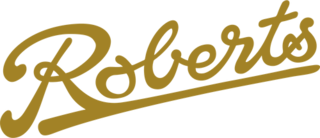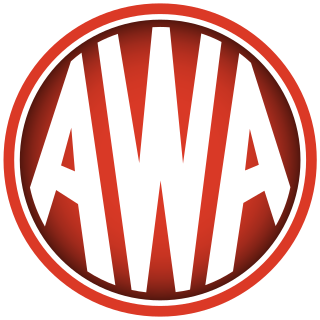Related Research Articles
A tetrode is a vacuum tube having four active electrodes. The four electrodes in order from the centre are: a thermionic cathode, first and second grids, and a plate. There are several varieties of tetrodes, the most common being the screen-grid tube and the beam tetrode. In screen-grid tubes and beam tetrodes, the first grid is the control grid and the second grid is the screen grid. In other tetrodes one of the grids is a control grid, while the other may have a variety of functions.

Thorn Lighting Ltd, a subsidiary of the Zumtobel Group, is a global supplier of both outdoor and indoor luminaires and integrated controls.

Braun GmbH is a German consumer products company founded in 1921 and based in Kronberg im Taunus. The company is known for its design aesthetic from the 1960s through the 1980s, which included products such as electric shavers, radiograms and record players, movie cameras, slide projectors, clocks, and small kitchen appliances for which "Braun became shorthand for reliable, no-nonsense modernist goods."
The Marconi Company was a British telecommunications and engineering company founded by Italian inventor Guglielmo Marconi in 1897 which was a pioneer of wireless long distance communication and mass media broadcasting, eventually becoming one of the UK's most successful manufacturing companies.

Roberts Radio is a British consumer electronics company that produces radios and related audio equipment. Based in Mexborough, the company has been making radios since its foundation in 1932 and claim to be the oldest active radio manufacturer in the UK.

Pye Ltd was an electronics company founded in 1896 in Cambridge, England, as a manufacturer of scientific instruments. The company merged with EKCO in 1960. Philips of the Netherlands acquired a majority shareholding in 1967, and later gained full ownership.

Grundig is a consumer electronics manufacturer owned by Arçelik A.Ş., the white goods manufacturer of Turkish conglomerate Koç Holding. The company makes domestic appliances and personal-care products.

AWA Technology Services, formerly named Amalgamated Wireless (Australasia) Ltd, is an Australian communications technology company. Throughout most of the twentieth century, AWA was Australia's largest and most prominent electronics organisation, undertaking development, manufacture and distribution of radio, telecommunications, television and audio equipment as well as broadcasting services.

Astor - Radio Corporation - Electronic Industries was the largest Australian electronics manufacturer, manufacturing across the retail sector of products from Washing Machines to Radio. Astor, which began operating in 1926, making electronics in Victoria was founded by Arthur Warner. The firm was innovative in that it offered radios in dynamic designs and colours compared with the conservative designs offered by other companies.
Ultra Electronics Holdings is a British defence and security company. It was listed on the London Stock Exchange and was a constituent of the FTSE 250 Index until it was acquired by Cobham, which is itself owned by Advent International.
Dansette was a British brand of record players, radiograms, tape recorders, and radio sets, manufactured by the London firm of J & A Margolin Ltd.

A.C. Cossor Ltd. was a British electronics company founded in 1859. The company's products included valves, radios, televisions and military electronics. The company was purchased by Raytheon in 1961.

Hawkins Cookers Limited Inc and formerly known as Pressure Cookers and Appliances Ltd, is an Indian company which manufactures pressure cookers and cookware. The company is based in Mumbai and has three manufacturing plants at Thane, Hoshiarpur and Jaunpur. It manufactures under brand names of Hawkins, Futura, Contura, Hevibase, Big Boy, Miss Mary and Ventura. Hawkins is one of the largest pressure cooker manufacturers in India and exports its products to more than 65 countries.
Ferguson Electronics is an electronics company specializing in small electronics items such as radios and set top boxes.

EKCO was a British electronics company founded by Eric Kirkham Cole CBE in Southend-on-Sea during 1924. The company started out by making radio sets, before progressing onto television sets and lighting. The company's knowledge of radio saw it expand into developing radar before and during World War II. The company expanded into making its own plastic bodies for radio sets, with EKCO Plastics later becoming a manufacturer of domestic wares. The company merged in 1960 with Pye to become British Electronic Industries Ltd, which was purchased by Dutch firm Philips in 1967, with the EKCO brand disappearing from brown goods during the 1970s.

In British English, a radiogram is a piece of furniture that combined a radio and record player. The word radiogram is a portmanteau of radio and gramophone. The corresponding term in American English is console.
Kolster-Brandes Ltd was an American owned, British manufacturer of radio and television sets based in Foots Cray, Sidcup, Kent.
Hacker Radio Limited manufactured domestic radio and audio equipment. The company was formed in Maidenhead by brothers Ron and Arthur Hacker in 1959, and traded successfully until 1977. Financial difficulties resulted in the company being sold and relaunched with the name Hacker Sound which closed in 1979.
C. Lorenz AG (1880–1958) was a German electrical and electronics firm primarily located in Berlin. It innovated, developed, and marketed products for electric lighting, telegraphy, telephony, radar, and radio. It was acquired by ITT in 1930 and became part of the newly founded company Standard Elektrik Lorenz (SEL) Stuttgart in 1958, when it merged with Standard Elektrizitätsgesellschaft and several other smaller companies owned by ITT. In 1987, SEL merged with the French companies Compagnie Générale d'Electricité and Alcatel to form the new Alcatel SEL.
L G Hawkins & Co Ltd was an England based company which manufactured small electrical domestic appliances. The company was founded by Leonard George Hawkins in 1913 in London. Initially Leonard George Hawkins imported domestic electrical products from the USA under the ‘Universal’ brand name.
References
- ↑ Dixon-Nutall/Bussey, Geoffrey/Gordon (1993). Hacker Radio. G D N Publication. p. 7. ISBN 0-9522197-0-0.
- ↑ Dixon-Nutall/Bussey, Geoffrey/Gordon (1993). Hacker Radio. G D N Publication. p. 28. ISBN 0-9522197-0-0.
- ↑ "Dynatron Museum - History".